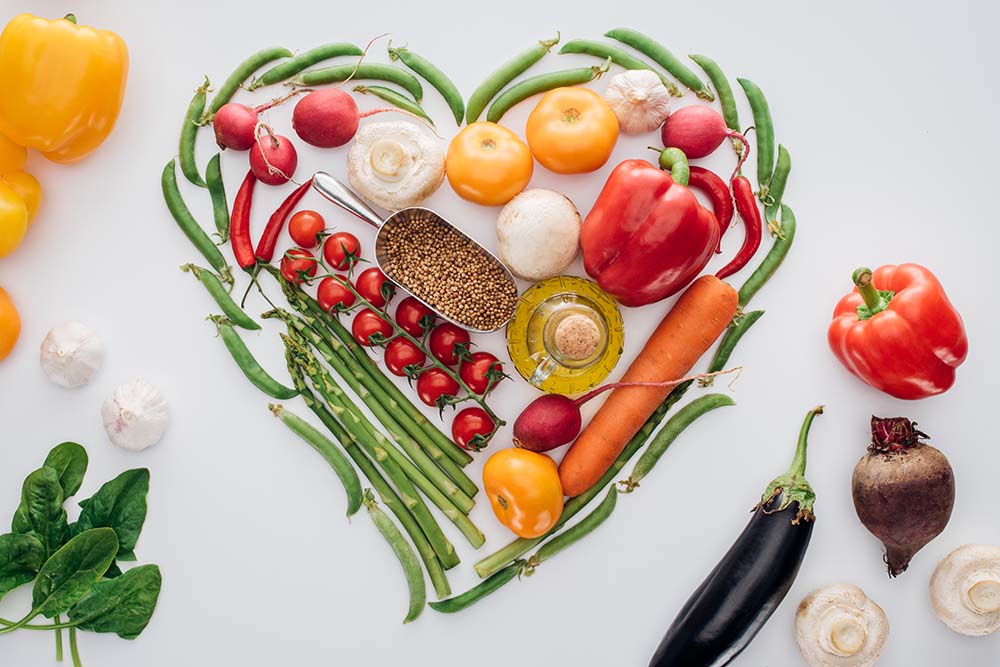After a heart attack, life can seem pretty daunting. Getting back into a routine is a priority, and this usually includes having to make huge lifestyle changes. There are medicines to take, exercises to do, maybe you have to quit smoking. However, one of the most important things to focus on is changing your diet. The cardiac diet is ideal.
Healthy eating not only helps with your recovery, it also reduces your risk of further heart problems. Following the cardiac diet will help keep your heart healthy for many years to come. And it’s a lot easier to follow than you may think!
What should I eat on the cardiac diet?
A healthy diet is about eating nutrient-rich foods, those low in salt and saturated fats. There is no need to visit specialized food stores. Everything you need is found in your local supermarket. You just need to know what you’re looking for!
Fruits and vegetables
Containing lots of vitamins and minerals, fruits and vegetables are low in calories and high in dietary fiber. They give a boost to your immune system and reduce inflammation. Pretty much every fruit and vegetable is good for you – fresh or frozen. Just make sure there is no added sugar or salt.
The general rule is to try and eat five servings of fruit and veg everyday. The more colors of the rainbow you include in your diet, the more nutrients you are consuming.

Whole grains
A great source of fiber and other nutrients, whole grains help to regulate blood pressure. Start by substituting your white loaf of bread with one made of whole wheat. Or try whole grain types of cereal, rice, pasta and noodles.
Omega-3 fatty acids
Found in cold-water fish, nuts and seeds, Omega-3 reduces blood pressure and slows the growth of plaque in the arteries. Try eating salmon, tuna, sardines, walnuts, flaxseed, and soya bean for a great source of Omega-3 fatty acids.
Low-fat proteins
Eating lower-fat proteins provides nutrients great for lowering cholesterol and reducing blood pressure. Choose lower-fat options of dairy products (milk, yoghurt) as well as leaner cuts of poultry and meats. Eggs are also a great source of protein.
What not to eat on the cardiac diet?
It’s not just about eating the right foods. Maintaining a healthy diet is about knowing which foods you need to avoid.
Saturated fats
Limiting the amount of saturated fat you eat helps reduce blood cholesterol, lowering the risk of heart attack. Avoid butter, lard, cream, peanut butter and coconut. Choose instead low-fat margarine, olive oil and avocados.
Salt
Having too much salt in your diet is bad for cardiovascular health. Extra sodium raises blood pressure which makes your heart work much harder than it should. A surprising amount of pre-packaged food has a high salt content.
Canned foods, condiments (ketchup and mayonnaise), salty snacks and takeaway meals should not be in the cardiac diet.
Sugar
This is the bad news for most of us! A sugar rich diet causes weight gain and problems with blood sugar levels. These contribute to a greater risk of heart attack. Cookies, cakes, candy, waffles and soft drinks should be cut out. Fruit contains natural sugars so avoid juices with added sugar.
So, ditch the junk food and start introducing the cardiac diet to maintain a healthy heart and help prolong life.
Here at Haym Salomon Home for Nursing & Rehabilitation in Brooklyn, our meals are prepared to ensure the continued health and well-being of our residents. Including those who follow the cardiac diet.
This content comprises informative and educational resources only and can not be considered as a substitute for professional health or medical guidance. Reliance on any information provided in this article is solely at your own risk. If you have any inquiries or apprehensions about your medical condition or health goals, talk with a licensed physician or healthcare provider.






Leave A Comment